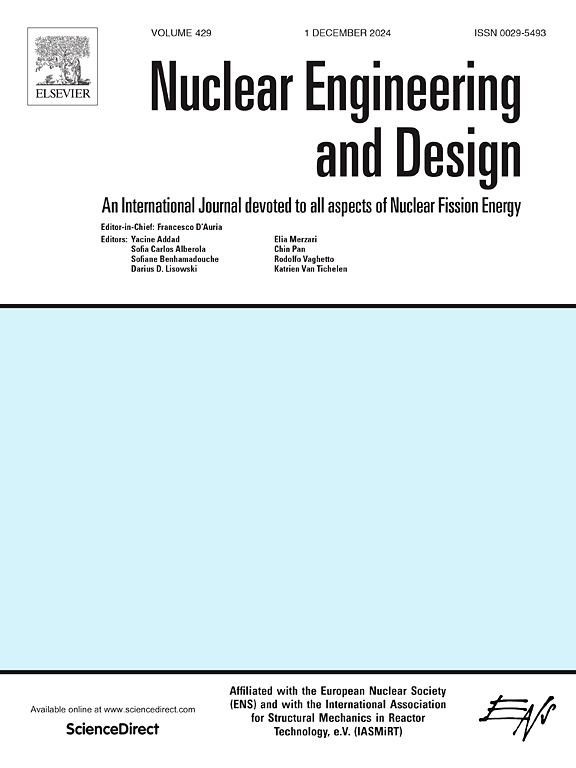Review of experimental models and findings on gas entrainment by vortex in hot plenum of sodium fast reactors
IF 1.9
3区 工程技术
Q1 NUCLEAR SCIENCE & TECHNOLOGY
引用次数: 0
Abstract
The presence of gas above the free surface in the hot plenum can have significant safety implications for Sodium Fast Reactors, as gas pockets within the core can affect neutron behavior and potentially lead to variations in core reactivity. One of the primary mechanisms for gas entrainment into the core is associated with vortices formed at the free surface. In response to this observation, extensive studies have been conducted to assess the risk of vortex-induced gas entrainment. Given the complexity and high cost of conducting experiments with sodium, most studies have employed water as a simulant fluid using a similarity approach. These studies generally fall into two categories: one involving basic geometries to identify the key phenomena driving vortex formation, and the other involving scaled models of actual reactor designs aimed at safety assessment and validation of numerical tools. This article provides an overview of past models used to study gas entrainment and highlights the main findings achieved through these studies.
钠快堆热静压室涡旋气体夹带实验模型及研究进展
热静压室内自由表面以上气体的存在对钠快堆具有重要的安全意义,因为堆芯内的气穴会影响中子的行为,并可能导致堆芯反应性的变化。气体夹带进入地核的主要机制之一与自由表面形成的涡流有关。针对这一观察结果,已经进行了广泛的研究来评估涡激气体夹带的风险。考虑到用钠进行实验的复杂性和高成本,大多数研究使用相似的方法将水作为模拟流体。这些研究一般分为两类:一类涉及基本几何形状,以确定驱动涡旋形成的关键现象;另一类涉及实际反应堆设计的比例模型,旨在进行安全评估和数值工具的验证。本文概述了过去用于研究天然气夹带的模型,并强调了通过这些研究获得的主要发现。
本文章由计算机程序翻译,如有差异,请以英文原文为准。
求助全文
约1分钟内获得全文
求助全文
来源期刊

Nuclear Engineering and Design
工程技术-核科学技术
CiteScore
3.40
自引率
11.80%
发文量
377
审稿时长
5 months
期刊介绍:
Nuclear Engineering and Design covers the wide range of disciplines involved in the engineering, design, safety and construction of nuclear fission reactors. The Editors welcome papers both on applied and innovative aspects and developments in nuclear science and technology.
Fundamentals of Reactor Design include:
• Thermal-Hydraulics and Core Physics
• Safety Analysis, Risk Assessment (PSA)
• Structural and Mechanical Engineering
• Materials Science
• Fuel Behavior and Design
• Structural Plant Design
• Engineering of Reactor Components
• Experiments
Aspects beyond fundamentals of Reactor Design covered:
• Accident Mitigation Measures
• Reactor Control Systems
• Licensing Issues
• Safeguard Engineering
• Economy of Plants
• Reprocessing / Waste Disposal
• Applications of Nuclear Energy
• Maintenance
• Decommissioning
Papers on new reactor ideas and developments (Generation IV reactors) such as inherently safe modular HTRs, High Performance LWRs/HWRs and LMFBs/GFR will be considered; Actinide Burners, Accelerator Driven Systems, Energy Amplifiers and other special designs of power and research reactors and their applications are also encouraged.
 求助内容:
求助内容: 应助结果提醒方式:
应助结果提醒方式:


